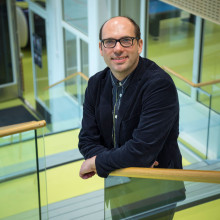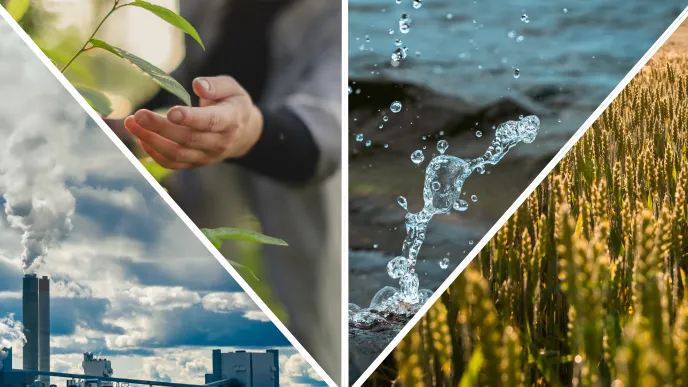The right amount of carbon dioxide helps the earth remain habitable. In addition, it can be used in various industrial manufacturing processes opening up new opportunities for eliminating carbon dioxide emissions before they are released into the atmosphere.
"Even though carbon dioxide can be beneficial, its production should not be considered valuable in itself. The focus should be on developing processes in which no excess carbon dioxide will be generated in the first place," says Kristian Melin, professor of process and factory design of biorefining at LUT University.
Melin works on the utilisation of carbon dioxide in the HIILIKETJU project, a joint initiative of Luke, VTT, LUT and LAB University of Applied Sciences.
In the future, plastic could be oil-free
Carbon dioxide can be used to make many products currently produced using oil. One of them is plastic. Melin says that they currently study the production of plastics based on carbon dioxide and hydrogen in the joint Forest CUMP project of LUT and VTT.
In the project, the most common types of plastic, polythene and polypropylene, will be produced from carbon dioxide and hydrogen. The carbon dioxide used for production is taken from the forest industry, whose bio-based carbon dioxide emissions correspond to almost half of Finland's current emissions. LUT's role in the project is to study the cleaning and utilisation of carbon dioxide emissions of the forest industry.
"Plastic produced from carbon dioxide is an opportunity for the future. Currently, it can be done technically, but it is still quite expensive. At least 95% of the world's plastic is still produced from oil. However, plastic is also produced sustainably, for example from biomass, which is already common" Melin says.
The CIMANET doctoral training pilot funded by the Ministry of Education and Culture has just started a project in which biodegradable plastic is made from pulp, carbon dioxide and hydrogen to replace old oil-based plastics in packaging, for example. In addition to LUT, eight other Finnish universities are involved in CIMANET.

Synthetic fuels from air and electricity
In Power-to-X (P2X) technology renewable electricity is used to produce sustainable, synthetic fuel, such as e-methane or e-methanol, from gas, such as hydrogen and carbon dioxide. Both can be used as fuel in road and maritime transport and industrial processes, significantly reducing carbon dioxide emissions compared to fossil fuels.
"P2X technology has been in the spotlight a lot lately, and there are also several commercial companies in the field in Finland. With P2X, surplus electricity from renewable energy, such as wind power, can be utilised to produce green hydrogen and further of carbon-neutral fuels," Melin says.
In Finland, the annual production potential of renewable energy is higher than the country's total energy needs, which means Finland has a great opportunity for advancing production based on P2X technology.

Solution for sustainable aviation?
According to Melin, one of the most interesting opportunities for P2X technology is the production of aviation fuel. It could open a new path for the green transition in air traffic.
Air traffic accounts for more than two per cent of the world's annual emissions. However, its emissions pollute the atmosphere more than road traffic, for example, because they are generated in the upper atmosphere instead of the earth's surface. In addition, large-scale electrification of air traffic is currently not possible.
"Aviation fuel produced with P2X technology could, in principle, transform air traffic into an emission-free industry. This, of course, would require that the air traffic used only P2X fuel. Technically, this is already possible, but the challenge is the lack of production facilities and the price, which is multiple times higher than kerosene."
A sustainable protein for a new era
The Finnish invention Solein is a protein-rich powder that is produced utilising electricity and carbon dioxide, among other things. The process of producing Solein resembles winemaking. In the process a particular microbe is fed carbon dioxide, hydrogen and oxygen, as well as nutrients. According to Solar Foods, the company behind Solein, carbon dioxide is a main raw material for Solein. This means that a significant amount of carbon dioxide is needed for the manufacturing process.
"Carbon dioxide is not always necessarily utilized through a chemical reaction. It is also suitable for bioprocesses, as in the case of Solein," says Melin.
Solein can be used to sustainably replace protein sources, such as meat, eggs or milk-based ingredients in foods. The production is not dependent on agriculture, weather conditions or climate, and because of that the protein has even been predicted to revolutionise food production.
The development of Solein started in a joint research project between VTT and LUT. Pasi Vainikka, CEO of Solar Foods and LUT’s Curious Alumni of the year 2024.
More information:









